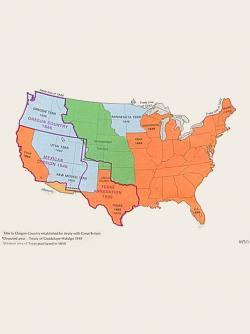Detecting a Stealthy Enemy
In World War I, the race was on to defeat a deadly enemy who could not be seen.
Over a century ago, the world descended into the cataclysm of the most terrible war in history up to that time, a conflict that would become known as World War I. Prior to the war, the German High Seas Fleet had been built up into a credible threat to the British Royal Navy, which at that time ruled the oceans of the world. In 1916, in an effort to break the stranglehold of the British continental blockade that was starving Germany of resources, the two great fleets met in a massive battle off the Danish coast near Jutland. While the Royal Navy’s Grand Fleet lost more ships, the Germans broke off the battle and returned to their ports, many of their vessels damaged beyond repair and most never to leave harbour again. Thus, command of the seas was conceded to the Royal Navy.
Unfortunately for the Allies, the German navy did not consist solely of a surface fleet. While the concept of the submarine had been around for a long time, and a number of navies had them, the Germans had made submarines—which they called “U-Boats”—a top priority. The German command understood that if they were to defeat Britain, the flow of goods coming into Britain from its Empire and other nations around the world had to be cut off. Thus, as early as 1914 the German navy utilized “underwater boats” at a time when these stealthy vessels were undetectable until it was too late. In 1917, their unrestricted attack policy was threatening Britain’s very survival, and desperate efforts were made to detect and combat an enemy that relied on concealment.
Hunting an Invisible Foe
Two years before the start of World War I, the great liner RMS Titanic sank in the North Atlantic after hitting the underwater portion of an iceberg. This disaster led to efforts to locate underwater hazards electronically. The technology available at the time was limited, and little success was realized in the years leading up to World War I. However, a few people who had been studying the new science of “ultrasonics” came on the scene in a most timely manner.
One of them was Robert William Boyle, a Canadian from the small hamlet of Carbonear, in what was then the Dominion of Newfoundland. Born in 1883, Boyle displayed unusual ability even as a young lad. At McGill University in Montreal, he had the privilege of studying under a New Zealander, Sir Ernest Rutherford—the father of nuclear physics, who would win the Nobel Prize in Chemistry in 1908 for his work to understand radioactivity. Under Rutherford, Boyle earned McGill’s very first doctorate in Physics.
In 1912, Boyle accepted the position of Head of Physics at the new University of Alberta in Edmonton. Motivated by the Titanic disaster, he began to study acoustics and the possibility of detecting underwater hazards. He was not alone in this research. A brilliant French scientist, Paul Langevin, had worked on some related theoretical principles, but had trouble developing a working device. When the war commenced in 1914, there was a sense of urgency to develop something that could detect a submarine. Historian Rod McLeod, of the University of Alberta, states, “Everybody starts working on this because the German submarines are sinking hundreds of allied ships…. The French are working on it, the Brits are working on it and the Americans are working on it” (“Inventor of sonar ignored by history.” phys.org, February 18, 2008).
Early in the war, a hydrophone was employed that could detect the sound of a submarine’s engines and the direction from which the sound was coming. However, there was no means of determining depth or distance.
At the outset of the war, Rutherford was asked by the British Admiralty to head a “Board of Inventions and Research.” Rutherford sent a message to Boyle asking him to join him on this board. Boyle, Langevin, Albert Wood and other notable scientists teamed up to solve the problem of submarine detection. They also reviewed the work of another Canadian-born scientist, Reginald Fessenden, who did the vast majority of his work in the U.S. Fessenden had developed the “Fessenden oscillator,” an early version of sonar that, by 1914, enabled submarines to communicate with Morse Code and also to locate icebergs. Each lead scientist was put in charge of a line of inquiry. Boyle was assigned the least-promising concept. Yet, in 1917, it was Boyle’s group that solved the major problem, inventing the “ultrasonic quartz transducer”—the first working model of an instrument that could detect the presence, depth, and distance of a submarine.
The Royal Navy gave the device the name ASDIC, a cryptic acronym that was intended to hide the nature and operational principle of the equipment. Later, the acronym was (fictitiously) explained as, “Anti-Submarine Detection Investigation Committee.” Robert Boyle took out no patents and neither sought nor received recognition for the invention, largely because of the secrecy imposed on the project even after the end of the First World War. Langevin, however, did apply for a patent and, as a result, was commonly thought of as the inventor.
ASDIC was installed in a few warships prior to the end of World War I, but the device did not become fully operational in the Royal Navy and U.S. Navy until 1924. It would prove its worth fifteen years later when the world again went to war, and Britain faced an even more serious challenge from the stealthy submarine menace. Eventually the name ASDIC was replaced by the American term SONAR (Sound and Navigation Ranging), but the principle was still that which Boyle’s team had developed.
Robert Boyle’s great contribution went largely unknown for decades, even though it was possibly one of the most significant influences on the military history of the twentieth century. He went on to become a member of the National Research Council of Canada as Director of Physics, where he supervised research on and the development of radar during World War II.
A Far Greater Danger
It is interesting how much effort mankind will expend to defend against a mortal danger, especially one that is known to be present but is mostly unseen. Unfortunately, mankind does not seem to have the same concern regarding an enemy who seeks its destruction (1 Peter 5:8) and can also be hard to detect. Our adversary, whom Jesus Christ referred to as “the ruler of this world” (John 14:30), operates with stealth, invisible, waiting to distract and lead people away from the knowledge of a way of life that would lead to peace and happiness. The efforts of this being are so effective that most of mankind is deceived by him (Ephesians 2:2; Revelation 12:9).
SONAR or ASDIC will not reveal him. Rather, he is revealed by the information source that God has preserved for us in the form of the Bible. You, too, can detect and avoid the deception and destructive power of this ruthless and formidable spiritual foe.
For more information, visit our magazine archive online at TomorrowsWorld.org. There you can read our September-October 2010 article, “Who Is the Devil?”






